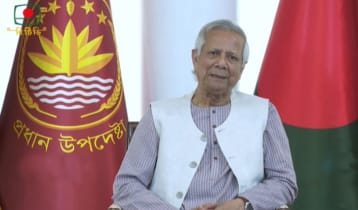Bangabandhu satellite reaches its own orbit
5 || risingbd.com

Risingbd Desk: Bangladesh's first geostationary communication satellite Bangabandhu-I (BS-I) has reached the desired location (orbital slot) 10 days after its launch from Florida.
"Our satellite has taken its position and started functioning normally," Bangladesh Communication Satellite Company Limited (BCSCL) Managing Director Md. Saiful Islam said today.
The BS-I was successfully launched from the historic Launch Complex 39A at NASA's Kennedy Space Center in Florida of United States 16:14 local time (02:14 BST) on May 11. Most modern rocket "Block 5" version of the Falcon 9 of SpaceX has lifted the BS-I for the orbit located at 119.1 degree east.
The BCSCL Managing Director said now they will conduct a series of tests before starting commercial operation. "Within three months, we will go into commercial operation," added Islam.
Officials said BS-I will move round the earth once in every 24 hours positioning on 36,000 kilometers height with the similar pace of the earth. Immediately after the launch by the Block 5 of Falcon 9, the BS-I travelled 35,700 kilometers and then it took ten days to travel another 300 kilometers. This process is termed "launch and early orbit phase".
Tajul Islam, Operation Engineer at Gazipur Ground Station, earlier said that BS-I has started sending signal to the ground station.
He said around two months will be required to get full control of BS-I from the ground stations located in Gazipur's Joydebpur and Rangamati's Betbunia.
BS-I will be mainly controlled from the ground station in Gazipur while Betbunia's ground station will be used as back up of Gazipur.
According to the agreement, manufacturing firm Thales Alenia Space of France will handle the satellite along with local engineers for next three years. To this end, an 18-member team of local engineers has been trained up already.
Bangladesh will operate satellite from 119.1 degree east using a payload comprising 26 Ku-Band and 14 C-Band transponders to deliver focused telecommunications coverage to Bangladesh. One transponder is equivalent to 36 MHz.
Ku-band covers Bangladesh and its territorial area of the Bay of Bengal, India, Pakistan, Nepal, Bhutan, Sri Lanka, Indonesia and the Philippines. C-band covers Bangladesh, India, Indonesia, the Philippines, Myanmar, Bhutan, Nepal, Sri Lanka, Afghanistan, Pakistan, Tajikistan, Kyrgyzstan, Uzbekistan, Turkmenistan, and portions of Kazakhstan.
The government took the Bangabandhu-I project in May 2015 and assigned the Thales Alenia by signing a $248-million deal in November the same year.
Thales Alenia completed the manufacturing works of the satellite few months ago and kept it in a warehouse in Cannes of France. On March 29, the satellite was shifted to Florida.
The satellite has 15 years for mission life span while another three years for its design.
The satellite will offer video services for Direct-to-Home (DTH), e-learning, Tele-medicine, Family Planning, Farming etc while voice service to cellular backhaul and disaster recovery, and data service for internet, SCADA, SOHO as well as business-to-business (VSAT).
Source: BSS
risingbd/Dhaka/May 21, 2018/NA/AI
risingbd.com


















